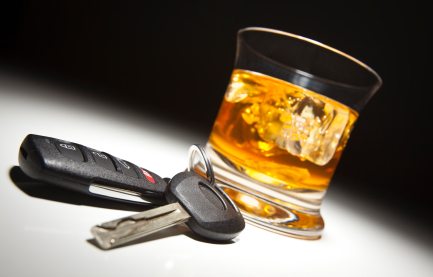KILLED IN AN ALCOHOL-IMPAIRED DRIVING CRASH
OF MOTOR VEHICLE CRASHES INVOLVE AN ALCOHOL-IMPAIRED DRIVER
Alcohol-Impaired Driving and Ignition Interlock Devices
In 2020, 11,654 people were killed in motor vehicle crashes involving drivers with a blood alcohol concentration (BAC) of .08 or higher, an increase of 14 percent over the previous year. These alcohol-impaired-driving fatalities accounted for 30 percent of the total motor vehicle traffic fatalities in the United States. The National Highway Traffic Administration (NHTA) found in 2010 that the total comprehensive costs of drunk driving are more than $200 billion annually. Adjusted for inflation only, that amounts to $265 billion in 2022 dollars.
An alcohol ignition interlock device (IID) is a mechanism similar to a breathalyzer which is linked to a vehicle’s ignition system. An IID can be used to deter an individual who has a prior drunk driving conviction from driving the vehicle with a blood alcohol concentration (BAC) that exceeds a specific level set by state law. Before the vehicle can be started, the driver must breathe into the device, and if the analyzed result is over the specified legal BAC limit, the vehicle will not start. In addition, at random times after the engine has been started, the IID will require another breath sample. This prevents cheating where a friend or relative breathes into the device to bypass the system in order to enable an intoxicated person to get behind the wheel and drive. If the breath sample is not provided, or the sample exceeds the device’s preset BAC, the device will log the event, warn the driver and then set off an alarm (such as the lights flashing or horn honking) until the ignition is turned off.
Currently, IIDs are mandatory for first and all offenders in only 34 states (AL, AK, AZ, AR, CO, CT, DE, HI, ID, IL, IA, KS, KY, LA, MD, ME, MS, MO, NE, NJ, NV, NH, NM, NY, OK, OR, RI, TN, TX, UT, VT, VA, WA and WV) and the District of Columbia. These state laws offer the most effective means for denying drunk drivers the opportunity to get behind the wheel after having been convicted of a drunk driving offense. Nationwide, in the decade between 2006 and 2016, IIDs prevented 2.3 million attempts to drive drunk, according to a 2017 report from Mothers Against Drunk Driving (MADD).
Ignition Interlock Law Facts
- An average of one alcohol-impaired-driving fatality occurred every 50 minutes in 2018.
- A common misconception is that most people who are convicted of their first drunk driving offense are social drinkers who made one mistake. However, studies show that the average first offender will have driven drunk 87 times before getting arrested.
- According to the CDC, adult drivers admitted they drank too much and got behind the wheel approximately 111 million times in 2014, which equals over 300,000 incidents of drinking and driving each day.
- There is clear public support for IIDs for all convicted drunk drivers, with surveys showing between 69 and 88 percent of respondents are in favor of requiring ignition interlocks for all convicted DUI offenders, even if it’s their first conviction.
- 82 percent of offenders themselves believe the ignition interlock device was effective in preventing them from driving after drinking.
- When IIDs are installed, they are associated with an approximately 70 percent reduction in arrest rates for impaired driving.
- Research shows that ignition interlocks reduce recidivism among both first-time and repeat DWI offenders, with reductions in subsequent DWI arrests ranging from 50 to 90 percent while the interlock is installed on the vehicle.
- Drivers with a BAC of .08 or higher involved in fatal crashes were four times more likely to have a prior conviction for driving while impaired (DWI) than were drivers with no alcohol (9% and 2%, respectively).
- A University of Pennsylvania study found that laws requiring alcohol interlocks for anyone convicted of driving under the influence of alcohol or drugs have reduced alcohol-involved crash deaths by 15 percent. The study also found that states with mandatory interlock laws saw a decrease of 0.8 deaths for every 100,000 people each year compared to states with less stringent laws; comparable to the estimated number of lives saved by frontal airbags (0.9 lives saved per 100,000 people).
- An Insurance Institute for Highway Safety study on the effects of Washington’s interlock requirement found that the law change was associated with an 8.3 percent reduction in single-vehicle late-night crash risk, suggesting a general deterrent effect of the expanded interlock requirement.
- According to the American Journal of Preventative Medicine, “[i]ncreasing the spread of interlock laws that are mandatory for all offenders would have significant public health benefit.”



